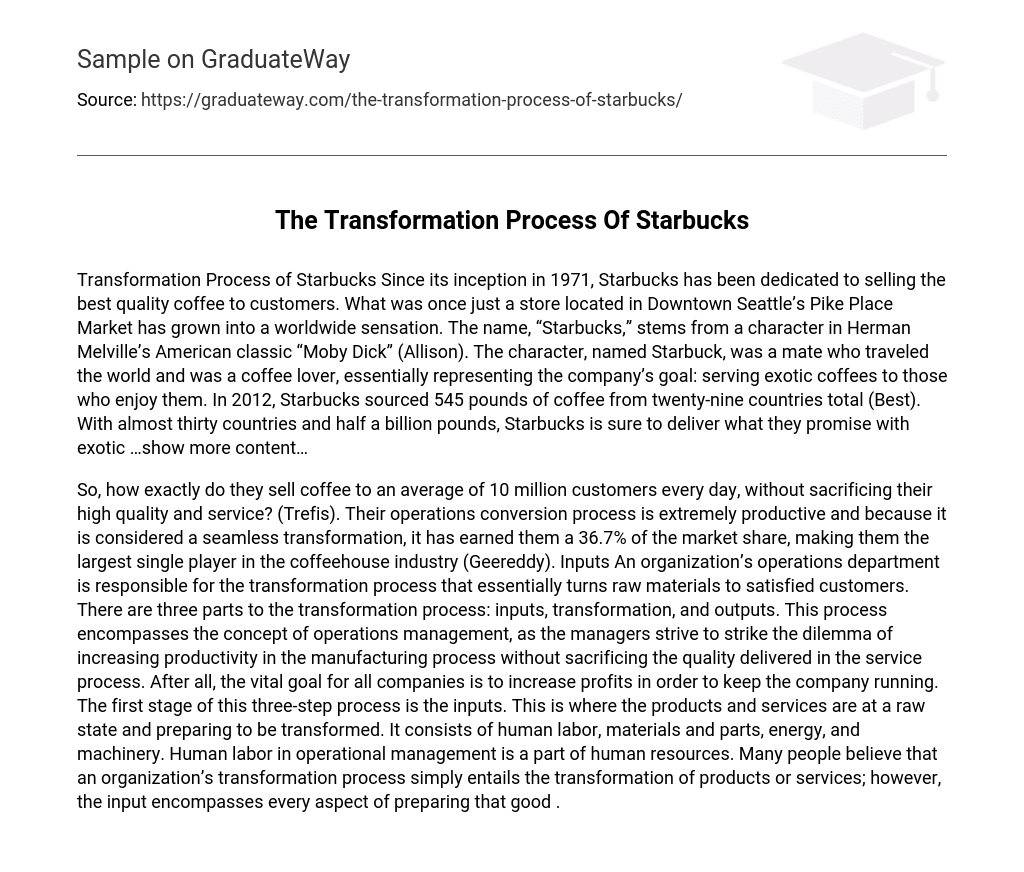Transformation Process of Starbucks Since its inception in 1971, Starbucks has been dedicated to selling the best quality coffee to customers. What was once just a store located in Downtown Seattle’s Pike Place Market has grown into a worldwide sensation. The name, “Starbucks,” stems from a character in Herman Melville’s American classic “Moby Dick” (Allison). The character, named Starbuck, was a mate who traveled the world and was a coffee lover, essentially representing the company’s goal: serving exotic coffees to those who enjoy them. In 2012, Starbucks sourced 545 pounds of coffee from twenty-nine countries total (Best). With almost thirty countries and half a billion pounds, Starbucks is sure to deliver what they promise with exotic …show more content…
So, how exactly do they sell coffee to an average of 10 million customers every day, without sacrificing their high quality and service? (Trefis). Their operations conversion process is extremely productive and because it is considered a seamless transformation, it has earned them a 36.7% of the market share, making them the largest single player in the coffeehouse industry (Geereddy). Inputs An organization’s operations department is responsible for the transformation process that essentially turns raw materials to satisfied customers. There are three parts to the transformation process: inputs, transformation, and outputs. This process encompasses the concept of operations management, as the managers strive to strike the dilemma of increasing productivity in the manufacturing process without sacrificing the quality delivered in the service process. After all, the vital goal for all companies is to increase profits in order to keep the company running. The first stage of this three-step process is the inputs. This is where the products and services are at a raw state and preparing to be transformed. It consists of human labor, materials and parts, energy, and machinery. Human labor in operational management is a part of human resources. Many people believe that an organization’s transformation process simply entails the transformation of products or services; however, the input encompasses every aspect of preparing that good .





